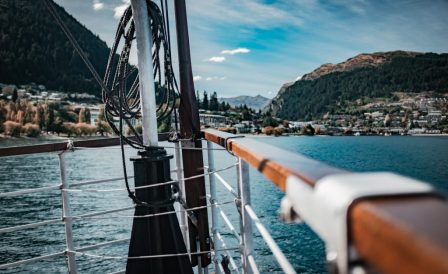New Zealand has the same retirement age both for men and women – 65 years. The percentage of citizens who have reached retirement age is still quite low by global standards – just over 14% in 2013. At the same time, the percentage of older people in New Zealand is growing from year to year.
The pension consists of a guaranteed pension and a voluntarily funded part (KiwiSaver). The New Zealand pension system is recognised as one of the most efficient in the world. This is due to the fact that the compulsory pension depends on the national average wage level, which provides more or less comfortable living conditions for the population of retirement age. And this is indeed the case if the pensioner has his own property. You can improve your financial situation with the help of voluntary contributions through the KiwiSaver system. The system aims to motivate employees to allocate funds for “old age”. Low inflation and a high level of trust in the state contribute to a fairly effective connection of the population to KiwiSaver.

Guaranteed pension
This part of pension savings is formed by deductions from the income of the working population of the country. The level of the average wage in the country is the main indicator for calculating mandatory pension benefits. This part of the pension does not depend on either the length of employment or the level of previous income, although other factors can influence the size of the pension:
- whether the person is married or not;
- whether he (she) lives independently or not;
- whether the spouse is receiving a pension;
- whether the person receives any other payments and compensation.
New Zealand retirees can work without prejudice to the amount of their pension they receive, although their income tax rate will be higher.
To date, the amount of the compulsory part of the pension after tax is:
- for those who live alone or with a dependent child – approximately NZD $ 400 per week;
- for those who live in a couple – the pension for 1 person is about $ 300 NZD per week.
The condition for obtaining compulsory pension benefits is:
- the presence of permanent residency or citizenship;
- residence in the country for 10 years from the age of 20, and of which 5 years a person must live in New Zealand after reaching 50 years of age. An exception is a number of countries included in the list of social security agreements, including Australia, Canada, Denmark, Ireland, Greece, Malta, the Netherlands, United Kingdom, the islands of Jersey and Guernsey, the countries of the Pacific region. Residents of these countries can expect to receive a pension without meeting the conditions for the length of residence in New Zealand.
Note that during these 10 years you can be absent from the country without losing the right to receive a pension if your absence is due to the following factors:
- treatment outside the country;
- professional retraining outside the country;
- work on a ship assigned to or owned by a port of New Zealand;
- military service in any of the countries of the Commonwealth;
- working as a missionary or an accredited volunteer outside the country.
If you are planning to leave the country as a permanent place of residence, then it is better to check the possibility and conditions of receiving a pension with specialists in advance, since the decision is made depending on at what age you plan to leave and to which country.
Here you can find contact details for communication with a specialist.
Accumulated part of pension (KiwiSaver)
KiwiSaver is a voluntary savings system that was created by the New Zealand government to help the working population save additional funds for retirement. Only a citizen or a permanent resident of the country can become a KiwiSaver member. By joining KiwiSaver, you agree to transfer a certain percentage of your earnings to a KiwiSaver account. In addition to the participant, deductions must be made by their employer, as well as the state.
There are three payment schemes for the KiwiSaver account. These are transfers in the amount of 3%, 4% or 8% of the amount of wages before taxes.
The employer’s contribution must be at least 3% of the gross salary. Along with the employer’s contributions, there is an annual state contribution, the maximum amount of which is $ 521.43 NZD. But it is provided only if at the end of the year the total receipts to the individual KiwiSaver account from the employee and the employer amounted to at least $ 1,042.86 NZD. If the amount received is less, then the amount of the transfer from the state will be less.
By joining KiwiSaver, you enter into an agreement with a company of your choice that will manage the funds received. Depending on the management company you choose and the savings scheme, your money will be managed in different ways. Here, as in any investment, the rule works – the higher the interest on income, the higher the likelihood of losing money. Thus, for different categories of the population, different schemes are proposed, depending on the acceptable degree of risk. By default, a basic scheme is offered, designed to preserve your funds more than to significantly increase. The choice of a management company and investment scheme should be taken seriously – KiwiSaver is an exclusively voluntary initiative and in the event of an unsuccessful investment, no one will return the lost savings.
You can view an approximate forecast for savings, taking into account your data on wages and the term of transfers, using the savings calculator.
Inflation in the country is low, so by choosing the right management company and management scheme, you can accumulate over time an amount that can become an initial investment for buying a first home, or it will be a good addition to your pension or a safety net against unforeseen expenses in the future.
Please note that to date, funds transferred to KiwiSaver can be withdrawn by a person only in a few cases:
- upon reaching retirement age;
- to buy their first home in New Zealand, provided that the house is purchased as a home, not an investment, the person has been a KiwiSaver member for at least 3 years,
- account balance after withdrawal will be at least $ 1000 NZD.
- in case of difficult financial circumstances related to illness, loss of loved ones, inability to pay a loan for housing, etc.
- when moving to another country for permanent residence (except Australia).
Note that private pension funds may have more loyal conditions for access to accumulated funds, in addition, transfer schemes may be more flexible.
How to join KiwiSaver
You can become a KiwiSaver member at the beginning of any employment. The employer must automatically sign every new employee between the ages of 18 and 64 if the employee has citizenship or permanent residency.
In case of unwillingness to make contributions to KiwiSaver, the employee must fill out an opt-out form during the period from the second to the eighth week of new employment. If no application has been submitted during this period, the employee is considered a KiwiSaver member for a minimum period of 12 months. After 12 months, you can at any time suspend transfers for a period from 3 months to 5 years by filling out a special form for the suspension of transfers (contribution holiday). If, after 5 years, the employee still does not want to renew contributions, then this form must be filled out again. Thus, the refusal can be extended indefinitely.
You can also become a member of the scheme after filling out an opt-in form from the employer or from the selected KiwiSaver provider.
If you are self-employed, you must also contact the selected provider to initiate deductions.
A complete list of KiwiSaver providers can be found on the official website.



